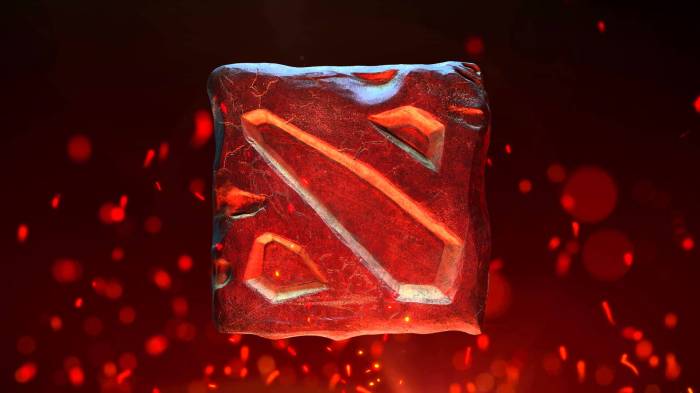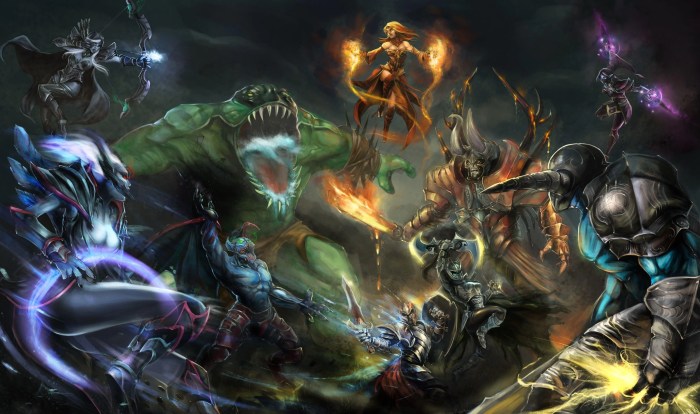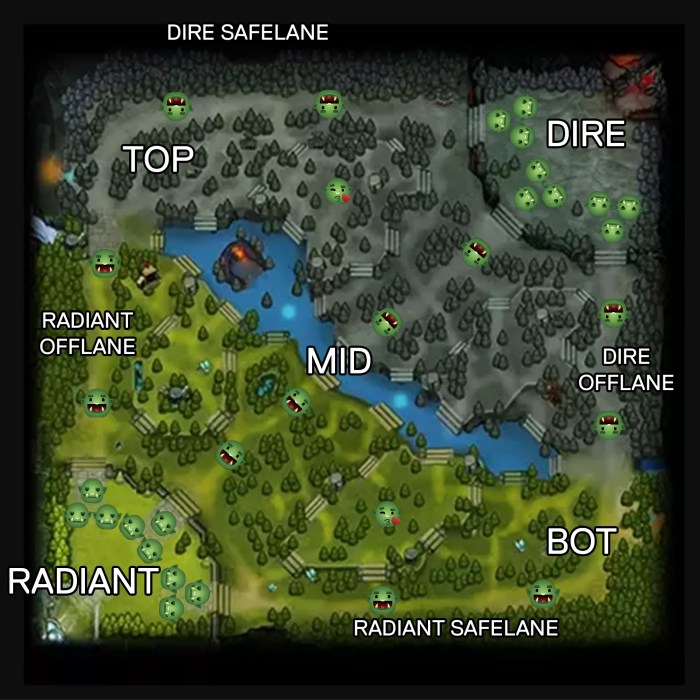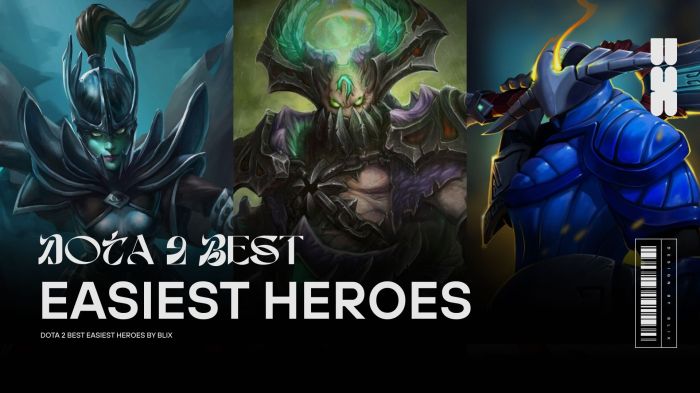Dota 2 A Comprehensive Guide
Dota 2, a behemoth in the MOBA genre, captivates millions with its intricate gameplay, thriving esports scene, and passionate community. From mastering core mechanics like last-hitting and denying to navigating the complex strategies of professional play, Dota 2 offers a deep and rewarding experience for both casual and competitive players. This guide delves into the game’s multifaceted aspects, exploring its mechanics, competitive landscape, community culture, development history, and hero design philosophy.
We will journey through the evolution of Dota 2 from its humble beginnings as a Warcraft III mod to its current status as a global esports phenomenon. We’ll examine the diverse roles within the game, the intricacies of item builds, and the impact of major updates on the game’s meta. Furthermore, we will explore the vibrant community that fuels Dota 2’s enduring popularity, encompassing its streamers, content creators, and the passionate discussions that define its online presence.
Game Mechanics and Gameplay

Dota 2’s gameplay revolves around strategic team combat and resource management within a complex environment. Mastering its core mechanics is crucial for success. This section will detail these mechanics and explore the diverse roles within the game.
Core Mechanics: Last Hitting, Denying, and Creep Equilibrium
Last hitting, denying, and understanding creep equilibrium are fundamental to Dota 2. Last hitting involves dealing the killing blow to enemy creeps (computer-controlled units) to gain gold and experience. Denying involves killing your own creeps before the enemy can, preventing them from gaining resources. Creep equilibrium refers to the balance of power between the two teams’ creeps at any given point in the game. Efficient last hitting maximizes gold income, while denying limits the enemy’s resources. Understanding creep equilibrium allows players to predict and control the flow of combat around the creeps, creating opportunities for ganks (ambushes) or safe farming. Precise timing and skill are required to master these mechanics.
Hero Roles and Responsibilities
Dota 2 features a diverse range of heroes, each typically fulfilling a specific role within the team. These roles dictate their responsibilities and how they contribute to victory.
Carry heroes are primarily focused on dealing significant damage in the late game. They usually require significant farm (gold and experience) to reach their full potential. Supports prioritize assisting their teammates, providing vision, healing, and disables. Mid-lane heroes are generally strong laners who can quickly gain levels and experience, often acting as a secondary carry or initiator. Offlane heroes are durable and often focus on disrupting the enemy carry’s farm, creating space for their team.
Gameplay Comparison with Other MOBAs
While Dota 2 shares similarities with other MOBAs like League of Legends or Smite, key differences exist. Dota 2 is generally considered more complex, with a steeper learning curve due to its intricate mechanics, larger hero pool, and more nuanced item interactions. The map is also larger and more complex, leading to more strategic depth and opportunities for outplaying opponents. Other MOBAs often simplify aspects of the game to make it more accessible to a wider audience. For example, the itemization in Dota 2 is far more extensive and less linear compared to some other MOBAs.
Item Build Paths for a Specific Hero: Anti-Mage
Anti-Mage is a late-game carry known for his ability to farm efficiently and deal massive damage. His item builds are highly situational but generally follow certain patterns. The following table showcases some common build paths, focusing on different gameplay styles:
| Item | Build Path (Early Game) | Build Path (Mid Game) | Impact on Gameplay |
|---|---|---|---|
| Power Treads | Phase Boots, Ring of Aquila | (Already built early) | Increased attack speed and movement speed, essential for farming. |
| Battle Fury | Ogre Axe, Ring of Health, Quarterstaff | Power Treads, Ring of Aquila | Provides attack speed, damage, and lifesteal, significantly boosting farming efficiency. |
| Manta Style | Ring of Basilius, Gloves of Haste, Recipe | Battle Fury, Power Treads | Provides additional attack speed, damage, and evasion, crucial for dealing with multiple enemies. |
| Heart of Tarrasque | Vitality Booster, Platemail, Recipe | Manta Style, Battle Fury | Provides substantial health and health regeneration, increasing survivability during team fights. |
Competitive Scene and Esports

Dota 2’s competitive scene is a vibrant and highly lucrative ecosystem, driving much of the game’s enduring popularity. The intense strategic depth, coupled with the high skill ceiling, fosters a compelling spectator experience that has captivated millions globally, creating a massive and influential esports landscape. The evolution of professional Dota 2 is marked by significant tournaments and the rise of legendary players and teams.
A Timeline of Significant Dota 2 Esports Events
The Dota 2 competitive scene exploded after its release in 2013, quickly establishing itself as a major player in the esports world. Key events have shaped the game’s trajectory and significantly boosted its popularity. Early events like The International 2011 (while still under the Warcraft III banner) laid the groundwork for the future, but the transition to Dota 2 marked a new era. The subsequent Internationals, particularly from TI3 onwards, saw escalating prize pools and global viewership, solidifying Dota 2’s position as a premier esports title. Other major tournaments like The Manila Major and ESL One events also contributed to the scene’s growth and provided opportunities for teams to showcase their skills and compete for significant prize money. The consistent evolution of the meta and the high level of competition have ensured the sustained interest in Dota 2 esports.
The International Tournament Structure
The International (TI) is the pinnacle of Dota 2 esports, an annual championship tournament organized by Valve Corporation. The tournament boasts a unique structure, with a massive prize pool largely funded by the community through the sale of the in-game compendium. Qualification involves a series of regional qualifiers, where teams compete for a coveted spot in the main event. The main event typically features a group stage followed by a double-elimination playoff bracket, culminating in a grand final to determine the world champion. The prize pool, which has reached tens of millions of dollars in recent years, makes TI the most lucrative esports tournament globally. The high stakes and intense competition create a thrilling spectacle for viewers worldwide.
Strategies and Team Compositions in Professional Dota 2
Professional Dota 2 is characterized by intricate strategies and diverse team compositions. Teams often employ distinct drafting strategies, prioritizing heroes that synergize well and counter their opponents’ picks. Popular strategies include focusing on early game aggression, pushing for a mid-game advantage, or scaling into the late game with powerful late-game heroes. Team compositions are meticulously crafted to fulfill specific roles, such as initiating fights, controlling the map, or dealing significant damage. Adaptability and counter-strategy are crucial for success at the highest level, requiring teams to constantly analyze and adapt their approach based on their opponents and the current meta. The constant evolution of the game and the introduction of new patches ensures that the strategic landscape remains dynamic and unpredictable.
Influential Dota 2 Professional Players
Many players have left indelible marks on the competitive scene. Their skills, leadership, and impact on the meta have shaped the game and inspired generations of players.
- Puppey (Clement Ivanov): Known for his exceptional captaincy and strategic mind, Puppey has consistently led his teams to success, showcasing his deep understanding of the game.
- Miracle- (Amer Al-Barkawi): Renowned for his exceptional mid-lane skills and mechanical prowess, Miracle- is considered one of the greatest mid players of all time.
- SumaiL (Sumail Hassan): A young prodigy who rose to prominence with his incredible talent and aggressive playstyle, SumaiL has cemented his place as a legendary Dota 2 player.
- KuroKy (Kuro Salehi Takhasomi): A highly respected captain known for his strategic depth and calm demeanor under pressure, KuroKy has consistently led his teams to impressive victories.
- NoTail (Johan Sundstein): A highly respected captain known for his strategic depth and ability to adapt to various situations, NoTail’s impact on the game is immeasurable.
Community and Culture

Dota 2 boasts a vibrant and exceptionally passionate global community, a crucial element in the game’s enduring popularity. This community extends far beyond the in-game experience, encompassing dedicated forums, influential streamers, prolific content creators, and a dedicated modding scene. The interplay of these elements shapes the unique culture and ongoing evolution of Dota 2.
The Diverse Dota 2 Community
The Dota 2 community is incredibly diverse, encompassing players of all skill levels, from casual players enjoying the game’s complexity to professional esports athletes competing for millions of dollars. This diversity is reflected in the various platforms where players interact. Dedicated forums, such as the official Dota 2 subreddit and various community-run websites, serve as hubs for discussion, strategy sharing, and news dissemination. These forums are crucial for fostering a sense of community and facilitating communication between players. Simultaneously, a vast network of streamers and content creators provides entertainment and educational content, ranging from entertaining gameplay highlights to in-depth strategy guides and analyses. These content creators significantly impact the game’s popularity and accessibility, introducing new players to the game and enriching the experience for veterans.
Common Slang and Terminology
The Dota 2 community has developed a rich lexicon of slang and terminology, often used in-game chat, forums, and streams. Understanding this jargon is essential for fully immersing oneself in the community. Common examples include terms like “GG” (Good Game), “WP” (Well Played), “noob,” “report,” “feed,” and numerous hero-specific abbreviations and phrases. Furthermore, specific strategies and tactics have their own shorthand, often reflecting the dynamic and nuanced gameplay. For instance, “gank” refers to a coordinated attack on an enemy hero, while “push” denotes a concerted effort to destroy enemy structures. This specialized language fosters a sense of camaraderie among players, creating an inside joke that strengthens the community bonds.
Impact of the Modding Community
Dota 2’s modding community has played a significant role in the game’s longevity and player experience. While Valve provides regular updates and new content, the modding community contributes significantly by creating custom maps, game modes, and tools that enhance gameplay and provide alternative experiences. These modifications, ranging from simple cosmetic changes to entirely new game modes, add considerable depth and replayability, keeping the game fresh and engaging for long-term players. The ability to customize aspects of the game empowers players, allowing them to shape their own experience and fostering creativity within the community. This active modding scene is a testament to the game’s robust engine and the community’s dedication.
A Typical Dota 2 Community Interaction
The following illustrates a typical in-game interaction, highlighting the communication style and dynamics within a Dota 2 match.
Player 1: “Mid pls, need to farm”
Player 2: “GG, enemy team too strong”
Player 3: “Nice gank, wp!”
Player 4: “Report mid, feeding”
Player 5: “Push high ground!”
This brief exchange demonstrates the blend of collaborative effort, strategic communication, and sometimes, frustration, which characterize many Dota 2 matches. The use of abbreviations and emotionally charged language is typical within the fast-paced and highly competitive environment of the game.
Game Development and Updates

Dota 2’s journey is a compelling narrative of evolution, shaped by its origins in the custom map Defense of the Ancients (DotA) for Warcraft III and the ongoing dedication of its developers at Valve. The game’s continuous development, driven by both internal innovation and community feedback, has profoundly impacted its gameplay, competitive landscape, and enduring popularity.
Dota 2’s development history is a testament to iterative design. Initially launched in 2013, it built upon the established foundations of DotA, retaining its core gameplay loop of two teams battling for control of a map, but enhancing it with improved graphics, refined mechanics, and a robust online platform. The transition from a custom map to a standalone title allowed for significant expansions in features and content, unavailable within the constraints of Warcraft III.
Dota 2’s Evolution from DotA
The transition from DotA to Dota 2 involved more than just a graphical overhaul. Valve meticulously recreated the core gameplay, aiming for a faithful adaptation while simultaneously modernizing various aspects. This included refining the hero roster, balancing individual hero strengths and weaknesses, and improving the overall user interface for a smoother player experience. The move to a dedicated client also enabled Valve to implement features impossible within the Warcraft III engine, such as integrated matchmaking, improved anti-cheat measures, and regular content updates. This allowed for a more streamlined and polished experience compared to the sometimes unstable and mod-dependent nature of its predecessor.
Impact of Major Game Updates and Patches
Major Dota 2 updates, often referred to as “patches,” significantly alter the game’s meta—the prevailing strategies and popular heroes. For instance, the introduction of the “Outworld Devourer” rework in patch 7.23 dramatically shifted the game’s landscape, emphasizing strategies centered around farming and late-game teamfights. Similarly, the introduction of the “Outpost” neutral creep camps in a later patch changed the rhythm of the early and mid-game. These updates, while sometimes controversial, aim to maintain balance, counter emerging dominant strategies, and introduce fresh gameplay experiences. They often necessitate adjustments to player strategies and hero choices, keeping the game dynamic and preventing stagnation. The impact is often seen in professional matches, where high-level teams quickly adapt to the changes, demonstrating the intricate strategic depth of Dota 2.
Comparison of Game Modes
Dota 2 offers several game modes catering to different playstyles and preferences. All Pick allows players to select heroes freely from the entire roster, fostering diverse team compositions. Captain’s Mode, a more strategic variant, requires team captains to take turns selecting heroes, demanding strong leadership and knowledge of hero synergies. Ranked Matchmaking, the primary competitive mode, uses a sophisticated ranking system to match players of similar skill levels, fostering a competitive environment with clear progression. Each mode presents unique challenges and opportunities, contributing to the game’s overall replayability and depth. The differences lie primarily in the degree of strategic planning and team coordination required, with Captain’s Mode representing the most strategic and team-dependent option.
Incorporation of Player Feedback
Valve actively incorporates player feedback into Dota 2’s development process. Through in-game feedback mechanisms, official forums, and community discussions, players contribute to shaping the game’s future. While not every suggestion is implemented, Valve’s commitment to community engagement is evident in their regular communication and responsiveness to player concerns. The frequent patches and updates often directly address issues raised by the community, highlighting the game’s iterative and community-driven development model. This continuous dialogue ensures the game remains relevant and enjoyable for its vast and dedicated player base. Examples of direct player feedback leading to changes include numerous hero reworks and balance adjustments based on community feedback on hero win rates and overall gameplay experience.
Hero Design and Balance

Hero design and balance in Dota 2 are crucial for maintaining a diverse and engaging gameplay experience. A well-balanced hero roster ensures that no single hero or strategy dominates the meta, promoting strategic depth and player skill expression. Poorly designed or unbalanced heroes can lead to frustrating gameplay and a decline in the game’s overall appeal.
Key Factors in Dota 2 Hero Design
A well-designed Dota 2 hero possesses a unique combination of abilities, stats, and playstyle that contributes to the game’s overall strategic complexity. Abilities should be synergistic, offering a clear identity and potential build paths. Stats should reflect the hero’s intended role and complement their abilities. The playstyle should be clearly defined, allowing players to understand the hero’s strengths and weaknesses. For example, a support hero might excel at crowd control and utility, while a carry hero might focus on dealing high damage and surviving prolonged fights. The interaction between abilities, stats, and playstyle is crucial in creating a balanced and enjoyable hero.
Examples of Significant Balance Changes
Numerous Dota 2 heroes have undergone significant balance changes throughout the game’s history. For instance, Pudge, initially a relatively weak hero, received several buffs to his abilities, making him a more viable pick. These changes aimed to increase his overall impact and make him more competitive. Conversely, heroes like Invoker, known for their incredibly high skill ceiling and potential for devastating plays, have often received nerfs to prevent them from becoming overwhelmingly dominant. These nerfs were implemented to balance his immense power with the need for maintaining a diverse and competitive metagame. The changes to these heroes often involved adjustments to their damage output, mana costs, ability cooldowns, and other relevant parameters to bring them in line with other heroes in the game.
Design Philosophies of Different Dota 2 Heroes
Dota 2 heroes showcase diverse design philosophies, resulting in a wide range of playstyles. Some heroes, like Sniper, are designed around maximizing damage output from a safe distance, relying on high attack range and damage amplification. Others, like Tidehunter, focus on initiating team fights with powerful crowd control abilities, creating opportunities for their allies to capitalize on. Finally, heroes like Shadow Fiend thrive on scaling their damage throughout the game, requiring patience and strategic positioning. Each hero’s design philosophy dictates their strengths and weaknesses, contributing to the game’s strategic complexity. A well-designed hero often has clear counters and synergies with other heroes, fostering a dynamic and engaging gameplay experience.
Comparison of Three Heroes’ Abilities
The following table compares the abilities of three heroes from different roles: Sniper (Carry), Lion (Support), and Pudge (Offlane).
| Hero | Ability 1 | Ability 2 | Ultimate |
|---|---|---|---|
| Sniper | Shrapnel (Area-of-effect damage) | Headshot (Increased critical strike chance) | Assassinate (High damage single-target attack) |
| Lion | Imprison (Single-target stun) | Arcane Orb (Magical damage) | Finger of Death (Instant-kill spell) |
| Pudge | Meat Hook (Pulls an enemy towards Pudge) | Rot (Deals damage over time) | Flesh Heap (Increases Pudge’s health and damage) |
Concluding Remarks

From its complex mechanics to its vibrant esports scene and dedicated community, Dota 2 stands as a testament to the enduring appeal of competitive strategy games. This exploration has only scratched the surface of this multifaceted game, highlighting its depth and the passion it inspires. Whether you’re a seasoned veteran or a curious newcomer, the world of Dota 2 offers endless opportunities for strategic mastery and community engagement. The constant evolution of the game ensures a consistently fresh and challenging experience, promising many more years of exciting gameplay and competition.
Q&A
What is the difference between Dota 2 and League of Legends?
While both are MOBAs, Dota 2 generally features more complex mechanics, a steeper learning curve, and a greater emphasis on individual skill. League of Legends often prioritizes team composition and macro-level strategies more explicitly.
How long does a typical Dota 2 match last?
Matches can range from 30 minutes to well over an hour, depending on the skill level of the players and the game’s flow.
Is Dota 2 free to play?
Yes, Dota 2 is free to play.
What are some good resources for learning Dota 2?
Numerous YouTube channels, Twitch streamers, and online guides offer tutorials and strategies for players of all skill levels. The Dota 2 wiki is also an invaluable resource.



